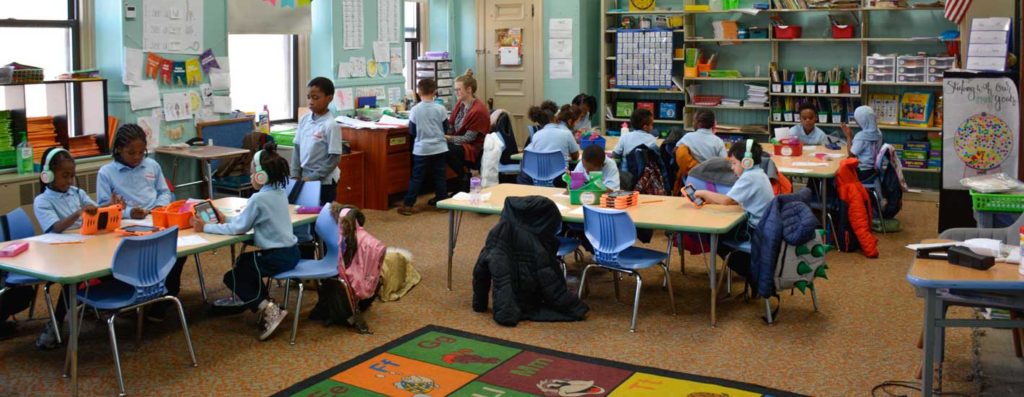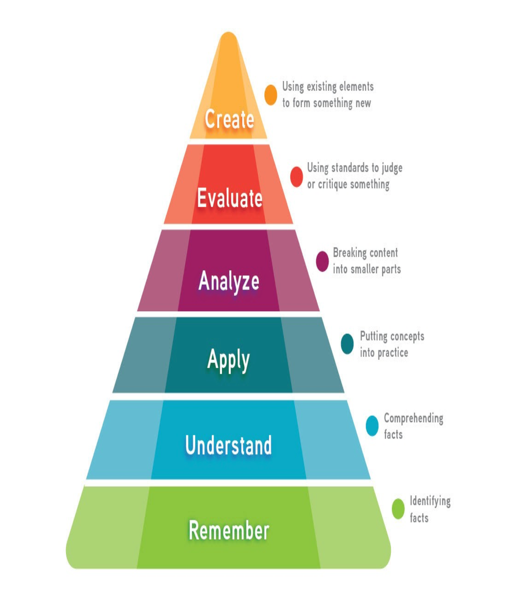
Flipped Learning
In essence, “flipping the classroom” means that students gain first exposure to new material outside of class, usually via reading or lecture videos, and then use class time to do the harder work of assimilating that knowledge, perhaps through problem-solving, discussion, or debates. In terms of Bloom’s revised taxonomy (2001), this means that students are doing the lower levels of cognitive work (gaining knowledge and comprehension) outside of class, and focusing on the higher forms of cognitive work (application, analysis, synthesis, and/or evaluation) in class, where they have the support of their peers and instructor. This model contrasts from the traditional model in which “first exposure” occurs via lecture in class, with students assimilating knowledge through homework; thus the term “flipped classroom.” Educators can flip to minimize time spent on lecture delivery and maximize time spent on challenging students to be active in their learning.
The mechanism used for first exposure can vary, from simple textbook readings to lecture videos to podcasts or screencasts. The videos can be created by the teacher or found online from YouTube, the Khan Academy, or other similar sources. The pre-class exposure does not have to be high-tech. Students simply complete pre-class reading assignments.
Vision Academy provides a variety of curricular resources in print or digital versions for teachers to use as a flipped learning strategy. As an example, while using Into Math in a flipped classroom, Teachers can assign tasks within a lesson to complete before class. For instance, students could complete the Spark Your Learning, Build Understanding, and/or Step it Out tasks depending on the lesson assigned. Once students complete those tasks within a lesson, students could complete the Check Understanding questions to allow teachers to collect data on their learning. These tasks could be assigned from the print or digital student edition.

